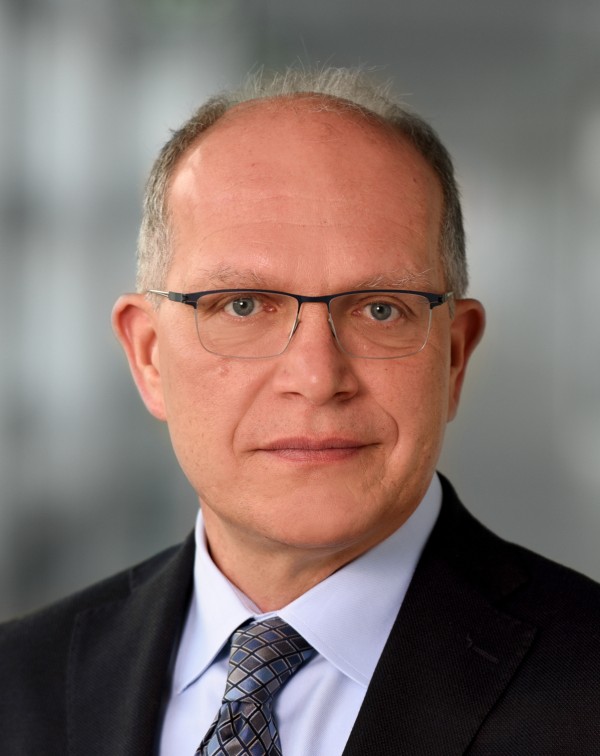Prof. Dr. Bozidar Stojadinovic

Prof. Dr. Bozidar Stojadinovic
Full Professor at the Department of Civil, Environmental and Geomatic Engineering
Head of Institute of Structural Engineering
ETH Zürich
Additional information
Božidar Stojadinović is the Chair of Structural Dynamics and Earthquake Engineering at the Swiss Federal Institute of Technology (ETH) Zürich. Before coming to ETH in July 2011, he was a Professor at the Department of Civil and Environmental Engineering at the University of California, Berkeley and a Geological Faculty Scientist at the Lawrence Berkeley National Laboratory, and an Assistant Professor at the Department of Civil and Environmental Engineering at the University of Michigan. His degrees are in Civil Engineering: PhD from the University of California, Berkeley in 1995, MS from Carnegie-Mellon University in 1990 and BS (Dipl.Ing.) from the University of Belgrade, Serbia in 1988.
His main research is in the field of community disaster resilience. In this area, he specializes in performance-based probabilistic resilience evaluation and design of civil infrastructure systems, buildings and bridges. In his second research area, Professor Stojadinović is in earthquake and dynamics engineering of structures. In this area, he is using performance-based design principles to develop new response modification techniques, such as rocking, sliding and isolation for vibration and seismic protection of civil infrastructure assets, and to develop new methods for seismic design of structures. His third research area is focused on new experimental testing methods, such as the hybrid simulation method to evaluate the response of civil structures to dynamic excitation using hybrid models that combine physical and numerical substructures. To date, he published his work in more than 350 scholarly publications.
At ETH, Professor Stojadinović teaches courses on seismic design, structural dynamics and theory of structures. At UC Berkeley and the University of Michigan, he taught courses on design of steel structures, experimental methods, finite element methods, earthquake engineering, statics and mechanics. To date, he graduated 49 doctoral students.
Honours
| Year | Distinction |
|---|---|
| 2023 | ICE Journal John Henry Garrood King Medal |
| 2017 | ACI Chester Paul Siess Award for Excellence in Structural Research |
| 2006 | ACI Fellow, American Concrete Institute |
| 2004 | ASCE Walter Huber Civil Engineering Research Prize, American society of Civil Engineers |
| 2003 | University of California, Berkeley, Presidential Chair Fellow Award |
| 1999 | US NSF CAREER Award: Haptic Models of Large Structures |
Course Catalogue
Autumn Semester 2025
| Number | Unit |
|---|---|
| 101-0117-00L | Theory of Structures III |
| 101-0189-00L | Seismic Design of Structures II |
| 101-1187-00L | Colloquium in Structural Engineering (Autumn Semester) |
| 139-0101-00L | Module 1: Introduction to Seismic Design and Swiss Seismic Code Provisions |
| 139-0102-00L | Module 2: Finite Element Modelling and Identification of the Seismic Behavior of Structures |
| 139-0103-00L | Module 3: Analysis Methods and Case Study Examples of Seismic Evaluation and Retrofitting |
| 139-0104-00L | Module 4: Individual Project Exercise |
Further Information
Professor Božidar Stojadinović is the Chair of Structural Dynamics and Earthquake Engineering at the Department of Civil, Environmental and Geomatic Engineering of the Swiss Federal Institute of Technology (ETH) in Zürich. Before coming to ETH, he was a Professor with the Department of Civil and Environmental Engineering at the University of California, Berkeley and a Geological Faculty Scientist at the Lawrence Berkeley National Laboratory. His degrees are in Civil Engineering: PhD from the University of California, Berkeley in 1995, MS from Carnegie-Mellon University in 1990 and BS from the University of Belgrade, Serbia in 1988.
Professor Stojadinović’ primary research interest is in probabilistic performance-based seismic design and evaluation of civil structures and infrastructure systems. In this area, he focuses on methods to quantify the seismic performance of inhabited communities and ways to increase their resiliency to natural hazards. He is using performance-based design principles to develop and apply seismic isolation and other response modification technologies for seismic protection of civil infrastructure assets such as highway bridges and nuclear facility structures. He was a member of the ACI and AISC committees developing structural engineering design codes ACI 349 and AISC N690 for nuclear facility structures. Behavior and seismic design of steel-concrete composite structures is his second research interest area. Currently, he is investigating structural characteristics of squat reinforced concrete and steel-concrete shear walls typical for nuclear facility structures. Professor Stojadinović is actively developing new experimental testing methods, such as the hybrid simulation method, for evaluation of the response of civil structures to dynamic excitation using hybrid models that combine physical and numerical substructures.